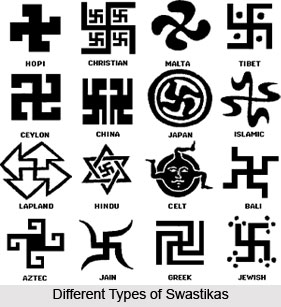 Swastika is the most powerful auspicious sign in the Hindu religion that brings prosperity, wealth and good fortune to the family. It can work as a good luck charm for every individual. This symbol will also be useful for starting new projects as one would successfully complete the job without any obstruction. Swastika represents the four main directions. It is an integral part of marriage ceremonies and is always used for worshiping. While the vertical lines in it indicate the self-existing Jyotirlinga the horizontal lines indicate the expanse of the universe.
Swastika is the most powerful auspicious sign in the Hindu religion that brings prosperity, wealth and good fortune to the family. It can work as a good luck charm for every individual. This symbol will also be useful for starting new projects as one would successfully complete the job without any obstruction. Swastika represents the four main directions. It is an integral part of marriage ceremonies and is always used for worshiping. While the vertical lines in it indicate the self-existing Jyotirlinga the horizontal lines indicate the expanse of the universe.
Swastika, in Hindu religion, is also considered to be the replica of Lord Vishnu himself. According to this notion the central point the symbol is the place of Brahma born from the naval of Lord Vishnu. The four sides of Swastika represent the four hands of Lord Vishnu. In general this sign symbolizes prosperity, wealth and good fortune. It is usually made by the blend of two colors--- red and orange. Worshipping Swastika is equivalent to worship Lord Ganesh. There are various ways in which the symbol is perceived. While it is the symbol of Gods Ridhi-Siddhi who give prosperity it also used to invite Agnidevta.
Swastika sign has special significance in Vastu Shastra. The vertical lines of Swastika should not be slanted. They should be drawn straight only then it becomes auspicious. Hitler used straight as well as slanted Swastika. Therefore he succeeded at some places and was defeated at others.
There are 5 kinds of Swastika:-
•Shri Ganesh Swastikas
•Shri Laxmi Upasana Swastika
•Rishi - Siddhi and Ganesh Swastika
•Yagna Agni Invoking Swastikas
•Constellation and Direction Showing Swastika




















